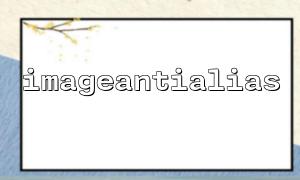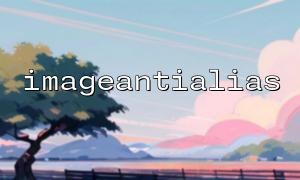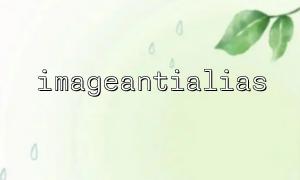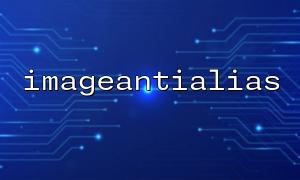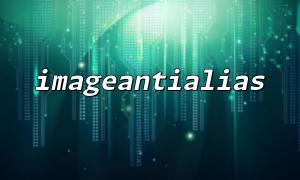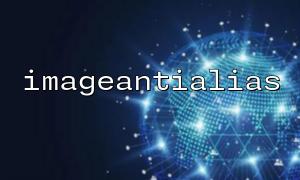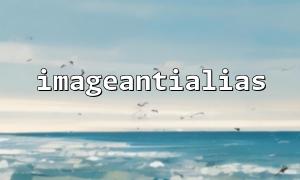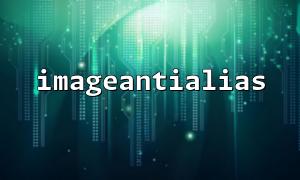In PHP, the imageantialias() function is used to anti-alias the lines of the image, so that the edges of the image are smoother and the visual effect is better. Especially when dealing with multi-threaded or batch images, it is particularly important to reasonably manage the anti-aliasing state, otherwise it is easy to lead to image rendering errors or performance bottlenecks.
This article will explore how to effectively manage anti-alias state when using the imageantialias() function in PHP to ensure that each image is processed independently and efficiently.
bool imageantialias ( resource $image , bool $enabled )
This function enables or turns off anti-aliasing effects on image resources. Enabled when the parameter $enabled is true , and closed when false .
State Sharing Risk : The image resources in PHP's GD library are independent, but if the anti-aliased state of the same resource is accidentally shared in the code, state confusion may occur.
Performance impact : Anti-aliasing overhead is high, and turning on it when unnecessary will reduce batch processing efficiency.
Thread safety : PHP itself does not directly support multi-threading, but in multi-process or asynchronous environments, management status is still critical.
To avoid cross-image state interference, it is recommended to call imageantialias() separately for each image resource:
$images = ['image1.png', 'image2.png', 'image3.png'];
foreach ($images as $imgPath) {
$img = imagecreatefrompng($imgPath);
imageantialias($img, true); // Turn on anti-aliasing separately
// Perform drawing operations,Painted line
imageline($img, 0, 0, 100, 100, imagecolorallocate($img, 0, 0, 0));
imagepng($img, "processed/{$imgPath}");
imagedestroy($img);
}
This ensures that the anti-aliasing settings for each image do not affect other images.
Turn off this function for images or processing links that do not require anti-aliasing:
imageantialias($img, false);
Especially in batch processing, it can be dynamically determined based on image content or processing requirements.
When processing large numbers of images in a multi-process environment, ensure that each process operates on image resources independently:
Use process isolation to avoid resource competition.
Use a file lock when writing to shared files.
Encapsulates the setting logic of anti-aliasing state to ensure that the code is maintained and easy to expand:
function processImageWithAntialias($imgPath, $enableAntialias = true) {
$img = imagecreatefrompng($imgPath);
imageantialias($img, $enableAntialias);
// Other drawing logic
imageline($img, 0, 0, 100, 100, imagecolorallocate($img, 0, 0, 0));
imagepng($img, "processed/{$imgPath}");
imagedestroy($img);
}
When calling, just pass in parameters according to the requirements.
PHP version and GD library version : The performance of different versions is slightly different, so it is recommended to test and confirm.
Image format : Anti-aliasing mainly affects vector drawing and has no direct effect on bitmap operations.
Debugging : You can temporarily switch imageantialias state, observe the image edge changes, and determine whether it is turned on correctly.
When PHP performs multi-threading or batch image processing, the key to reasonably manage the anti-alias() anti-alias() is:
Set up anti-aliasing individually for each image resource to avoid state crossing;
Enable on demand according to actual needs to balance quality and performance;
Ensure resource isolation and locking mechanisms in a multi-process environment;
Encapsulate processing logic to improve code clarity and reusability.
Through the above measures, the correctness and performance of anti-aliasing functions in batch image processing can be effectively guaranteed.



